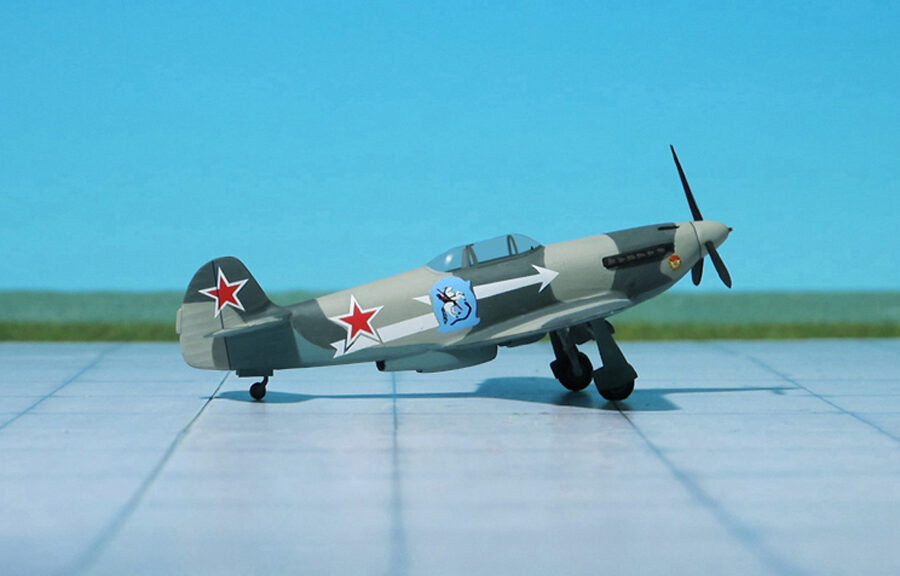TYPE: Fighter
ACCOMMODATION: Pilot only
POWER PLANT: One Klimov VK-105PF2 liquid-cooled piston engine, rated at 1,290 hp
PERFORMANCE: 401 mph at 13,500 ft
COMMENT: The Yakovlev Yak-3 was a single-engine single-seat World War II Soviet front line fighter aircraft. Robust and easy to maintain, it was much liked by pilots and ground crew alike. It was one of the smallest and lightest major combat fighters fielded by any combatant during the war. Its high power-to-weight ratio gave it excellent performance. It proved a formidable dogfighter.
In 1943, a group of designers headed by Alexander Sergeyevich Yakovlev designed the Yak-3, a further development of the proven Yak-1 aimed at improving survivability, flight characteristics and firepower, which required a lower weight, a higher-power engine and therefore, faster speed.
The first of two prototypes had a slatted wing to improve handling and short-field performance while the second prototype had a wooden wing without slats in order to simplify production and save aluminium. The second prototype crashed during flight tests and was written off. Although there were plans to put the Yak-3 into production, the scarcity of aviation aluminium and the pressure of the Nazi invasion led to work on the first Yak-3 being abandoned in late 1941.
In between 1942 and 1943, Yakovlev built the Yak-1M, a prototype that would ultimately lead to the Yak-3, coupled with the VK-105PF2, the latest iteration of the VK-105 engine family, where “P” indicated support for an autocannon that fires between the engine banks, through the hollow propeller shaft – mounting. It incorporated a wing of similar design but with smaller surface area (17.15 to 14.85 m2 , and had further aerodynamic refinements, like the new placement of the oil radiator, from the chin to the wing roots (one of the visual differences with the Yak-1, Yak-7, Yak-9). A second Yak-1M (originally meant as a “backup”) prototype was constructed later that year, differing from the first aircraft in that it had plywood instead of fabric covering of the rear fuselage, mastless radio antenna, reflector gunsight and improved armour and engine cooling.
The first 197 Yak-3 were lightly armed with a single 20 mm SHVAK cannon and one 12.7 mm UBS synchronized machine guin, with subsequent aircraft receiving a second UBS for a weight of fire of 2.72 kg (6.0 lb) per second using high-explosive ammunition. All armament was installed close to the axis of the aircraft with a cannon mounted in the engine “vee” firing through the propeller boss, synchronised machine guns in the fuselage, helping accuracy and leaving wings unloaded.
Lighter and smaller than Yak-9 but powered by the same engine, the Yak-3 was a forgiving, easy-to-handle aircraft loved by both novice and experienced pilots and ground crew as well. It was robust, easy to maintain, and a highly successful dog-fighter. It was used mostly as a tactical fighter, flying low over battlefields and engaging in dogfights below 13,000 ft.
Unresolved wartime problems with the Yak-3 included plywood surfaces coming unstuck when the aircraft pulled out of a high-speed dive. Other drawbacks of the aircraft were short range and poor engine reliability. The pneumatic system for actuating landing gear, flaps and brakes, typical for all Yakovlev fighters of the time, was troublesome. Though less reliable than hydraulic or electrical alternatives, the pneumatic system was preferred owing to the weight saving (Ref.: 24).












